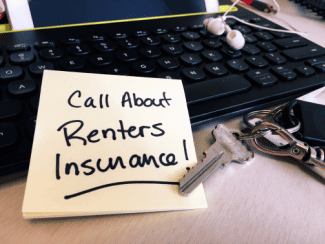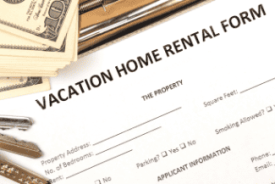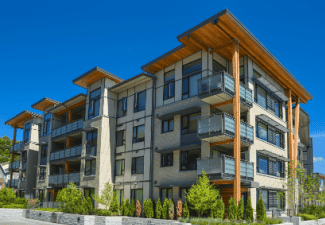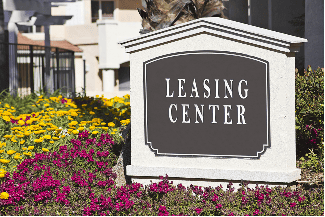6 Surprising Ways Rental Income Helps You Retire Early (and 4 Risks)

You worked for 40 to 50 years, saving a little money each month and building up a nest egg of paper assets (stocks and bonds). You then retired with a pension and hefty Social Security benefits, and you gradually spent down your nest egg, hoping not to run out of money before you kicked the bucket.
Times have changed. Pensions have been dying off for decades, with the number of US pension plans dropping 73% from 1986 to 2016. Meanwhile, Social Security faces insolvency in 15 years, even though the Social Security Administration has quietly been reducing benefits for the last two decades. Studies show that the purchasing power of Social Security benefits declined 33% since 2000.
Which increasingly leaves Americans relying on their own savings to pay for their retirements. Yet most Americans are woefully unprepared to plan their own retirements, as witnessed by their low retirement balances. A worrying one third of baby boomers, already at or near retirement, have less than $25,000 saved.
In today’s America, you either need to plan your own retirement or pay someone to plan it for you. And if you count solely on paper assets to get you there, prepare for an uphill battle.
As you plan your retirement income, consider the following perks to rental properties. You may even be able to retire decades earlier than average – I certainly plan to!
1. Ongoing Income
Rents keep coming in, forever, without you having to sell off any assets. It sounds simple and obvious, yet the benefits of ongoing income are anything but.
With a nest egg of paper assets, retirees gradually sell off their assets, dwindling their net worth over time. To ensure their clients don’t run out of money, financial planners propose a concept called “safe withdrawal rates”: the percent of your portfolio that you can sell off each year, with a low risk of running out of money before dying.
It’s a trickier proposition than it sounds, due to something called sequence of returns risk. It turns out that a market crash early in your retirement poses a far greater threat than one late in your retirement. A market crash around the time you retire can disproportionately drain your nest egg, which means many people end up having to overcompensate by saving far more money than they will likely need.
All of which comes back to the fact that you’re gradually selling off assets.
Therein lies the beauty of rental properties: you don’t have to sell anything off to generate the income. In fact, rentals cause your net worth to actually rise over time, as the properties appreciate, and as your tenants pay off your rental property loans for you.
When you don’t have to sell off your assets to generate income, you can live as a retiree indefinitely. Which means you can retire at any age you like, provided you have enough rental income.
2. Returns Adjust for Inflation
With most investments, you have to subtract inflation from the return to calculate the “real” return. For example, if you buy a one-year bond paying 3.5%, but inflation runs at 2% that year, then your real return on that bond is only 1.5%.
Hardly worth writing home about.
Landlords, however, can raise rents every year. Not only do they keep pace with inflation, but, historically, US rents have risen faster than inflation. That’s because rents are one of the primary drivers of inflation; they’re the cause, not the effect.
Better yet, when you use a rental property loan to buy a property, inflation works even harder in your favor. Your mortgage payment remains fixed over the next 30 years, but the rent continues rising, with each year’s percentage increase compounding on the last.
For example, say you buy a property that rents for $1,000, and your rental property loan payment is $400. In ten years, it may well rent for $1,500 or more; in 20 years, it could rent for $2,200. But your mortgage payment will still be $400.
3. Leverage: Other People’s Money, Your Assets
Inflation isn’t the only way that leveraging other people’s money serves you.
Rental property loans also help you diversify your properties. Imagine you have $100,000 to invest – you could buy one property for $100,000, or you could buy five properties for $100,000 apiece, and put $20,000 (20%) down on each. Your portfolio consists of five properties rather than one, which limits how much money you have tied up in any one asset.
And, of course, you benefit from cash flow, appreciation, and tax advantages from five properties instead of one.
Speaking of cash flow, taking out a rental property loan can actually accelerate your cash flow and returns. Take the scenario above with the $100,000 properties, and say they rent for $1,500/month, half of which goes to non-mortgage expenses. If you buy with cash, you invest $100,000 and earn $9,000 per year in net income (a 9% return).
Instead, imagine you take out 30-year loans at 5% interest. That adds a monthly payment of $429 for each property, which cuts your monthly cash flow to $321. For each property, you invest $20,000 as the down payment, and earn $3,852 per year: a cash-on-cash return of 19.26%. That’s more than double your returns if you invested cash!
With five of those properties for your $100,000 investment, each generating $3,852 per year, you earn $19,260 in net annual income. That’s the power of leverage.
Just keep in mind that leverage cuts both ways. It effectively multiplies your returns, so if you take out rental property loans to buy bad investments, they can accelerate your losses, too.
4. Rental Returns Are Predictable
When you buy a stock or index fund, you hope for the best based on historical performance.
When you buy a rental property, you can forecast your exact returns.
You know the purchase price. You know the market rent. And you can accurately forecast all expenses.
Where most new investors go wrong is in underestimating those expenses. Sure, they take into account the rental property loan, which probably escrows for property taxes and insurance. But they stop there, simply subtracting the mortgage payment from the rent.
In the real world, landlords face far more expenses. They have to account for irregular – but inevitable – expenses like vacancy rate, repairs and maintenance, travel, bookkeeping and accounting costs. They also need to account for property management costs, even if they plan to manage the property themselves.
Why? Because it’s a labor expense, whether you do the labor or someone else does. To ignore it is to compare apples to oranges, when you compare returns on rental properties to returns on truly passive investments like index funds.
Before investing in a rental property, get very comfortable with forecasting rental cash flow.
5. Control Over Returns & Risk
Shareholders have little or no control over the performance of companies whose stock they own. Rental investors have a great deal of control over their properties’ performance.
Most notably, landlords can mitigate all of the major risks that come with owning rentals. Those risks include:
- High vacancy rates
- Tenants defaulting on the rent
- Tenants damaging the property
Rental investors can mitigate all three of those risks with their first decision: where to buy properties. By investing in areas with strong demand for housing, among a stable and conscientious population of renters, they minimize all three of those risks.
After they purchase, they can further minimize those risks with aggressive and thorough tenant screening practices. From credit and criminal checks to verifying employment and income, speaking with former landlords and even conducting inspections of applicants’ current homes, landlords can screen out bad tenants.
In fact, they can even screen specifically for tenants likely to stay long-term. Because the greatest costs and labor incurred by landlords come during turnovers, landlords can maximize their returns by minimizing turnovers.
Finally, comprehensive insurance also protects against these risks. Property insurance not only covers damage, but can also cover liability. And through programs like LeaseGuarantee, landlords can virtually eliminate the risk of losses from rent defaults. Even if your tenant ends up defaulting, you’ll still get your payments, and be able to cover your rental property loan payments.
6. Tax Benefits
Paper assets come with almost no inherent tax benefits. To minimize your taxes on returns, you have to invest in them through special tax-sheltered accounts such as IRAs, HSAs, or 529 plans.
Rental properties come with a slew of tax benefits already baked into them, with no special accounts required. That frees you to use tax-sheltered accounts for paper assets, while investing in as many rental properties as you like with no annual caps.
Investors can deduct every conceivable expense they incur from buying or owning rentals. That includes travel, maintenance and repair costs, insurance, bookkeeping and accounting costs, interest on rental property loans, and more. You can even deduct for paper expenses that you didn’t actually incur, such as depreciation.
Best of all, all these deductions take place on a separate, above-the-line schedule on your tax return. That means you can take all of these deductions, while still taking the standard deduction personally, rather than having to itemize.
4 Drawbacks of Rental Properties
If rental properties had nothing but upsides, everyone would invest in them. So why don’t more people invest in rentals? What downsides do investors need to understand before shelling out tens of thousands of dollars?
First, they require skill and knowledge to invest in. You need to learn how to accurately forecast cash flow, if you want to earn strong, predictable returns. Property management comes with its own set of skills, and for that matter, so does finding good deals.
Which raises the second drawback: rental properties require labor and work on your part. Labor to find good deals, to begin with – you can’t just click a button and buy a rental property, like you can with an index fund. But they also take labor to manage.
Third, rental properties are not liquid. You can’t buy and sell them instantaneously, or for free, the way you can stocks and index funds. It usually takes several months and many thousands of dollars in marketing and closing costs to sell a property.
Finally, rental properties present a challenge for diversification. With stocks, you can take $100 and buy an index fund with exposure to hundreds or even thousands of different companies. With rentals, a single property could require $20,000, $50,000, $100,000 or more of your own cash, even if you take out a rental property loan.
That forces you to put many of your green dollar-shaped eggs in a single basket, which raises your risk by limiting your diversification.
Final Thoughts
As you form your long-term financial plans and goals, including financial independence and retiring, start thinking in terms of multiple income streams.
For example, imagine you can live on $5,000 per month. You aim to generate $2,500 per month from rental properties, another $1,000 from dividends from stocks, $500 from bonds, and $1,000 from a mix of private REITs and notes.
So you start investing. Another property here adds $250 per month in income, and another property there adds $400. You funnel money into dividend-paying stocks and funds. You start buying shares in private REITs with high yields.
With each stream of passive income that you add, you reduce your dependence on your job to survive. At a certain point – in this case, $5,000 per month – you reach financial independence. No matter your age, you no longer need to work.
And then you can spend the rest of your life doing whatever you want, whether that means volunteering, working on passion projects, writing novels, working at a winery, or simply raising your kids and traveling the world.
What does your financial independence and retirement plan look like? What role do rental properties play in it?















 Accessibility
Accessibility